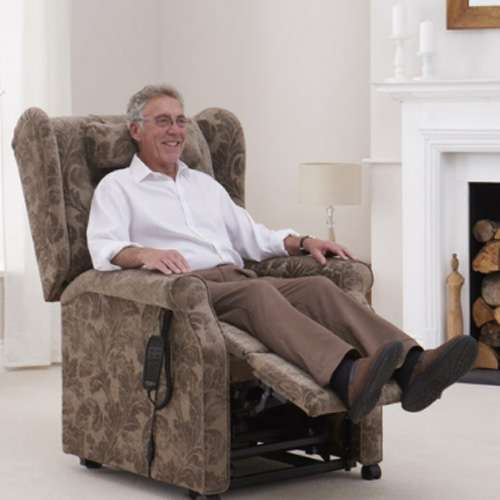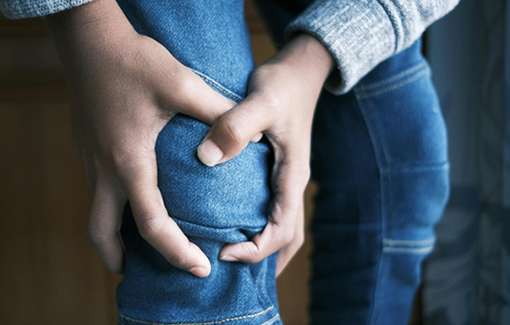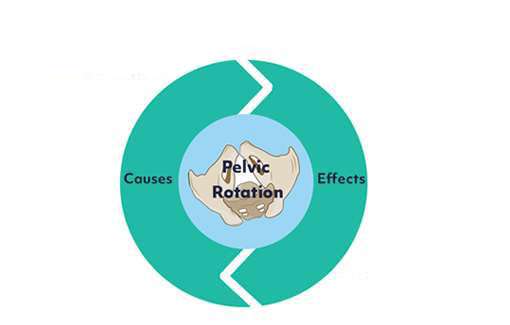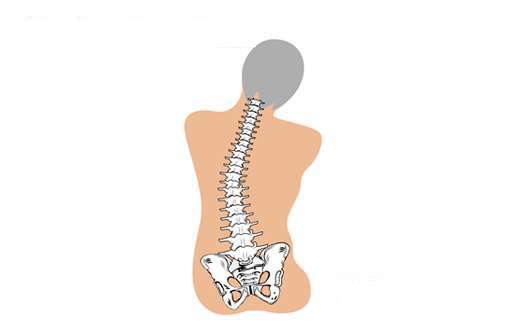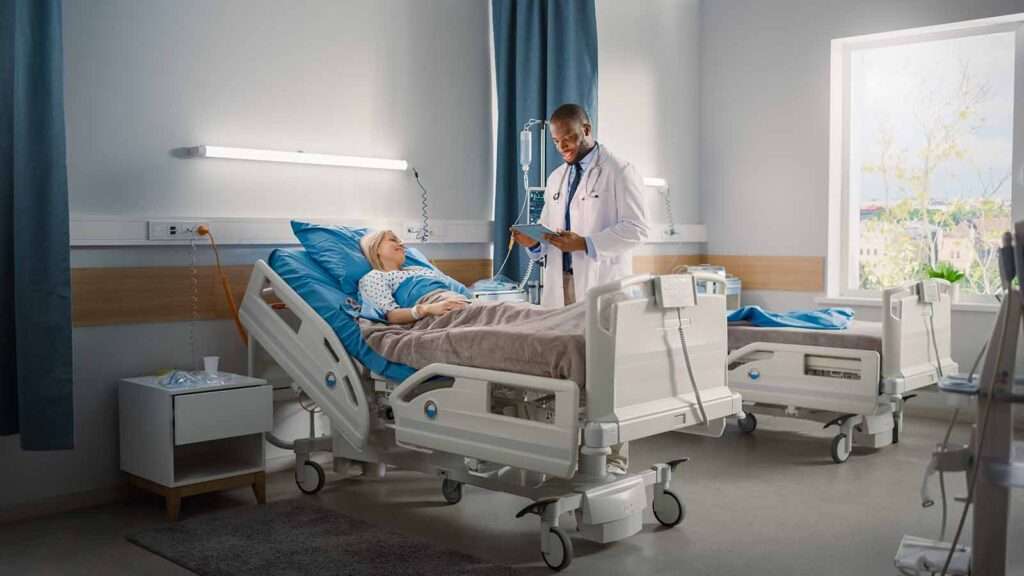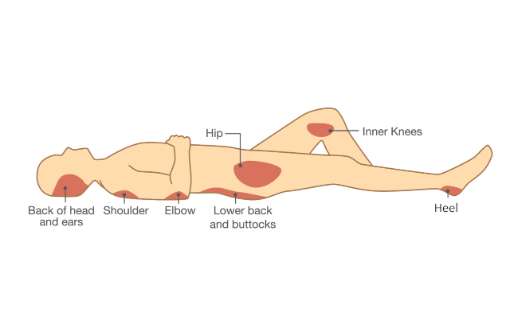Finding the right specialist seating for someone with osteoporosis is important to maintaining their comfort and quality of life with what can be a very complex condition. The correct seating solution can play an essential role in reducing the risk of falls and fractures, but you also have to bear in mind other external factors like sitting on and getting off the chair with brittle bones.
What is Specialist Seating?
Specialist seating is designed to support people with complex conditions, low mobility, the elderly, and disabled individuals. In this blog post, we will explore the key features to look for when selecting specialist seating to manage osteoporosis.
Our seating assessors have thought of a few things to look out for in specialist seating for people with osteoporosis. For details on seating for more conditions, take a look at our seating eBook.
Your comfort is important to us, so if you prefer a more personal touch, our trained assessors can carry out a seating assessment in your place of residence and guide you through your specialist seating journey.
Arrange an assessment
Jump straight to…
What is Osteoporosis?
Osteoporosis is a condition that causes bones to become fragile and brittle, making them more likely to fracture or break. It’s a common condition, affecting millions of people worldwide, especially women over 50 years old. Women tend to have a higher risk of developing osteoporosis than men, but other external factors like your family medical history, having a low BMI, and heavy drinking and smoking can make you more vulnerable to developing the condition.
Whilst a decrease in bone density is a normal part of ageing, osteoporosis causes some people to lose bone at a much faster rate, making their bones more brittle and susceptible to breaking from things like falls, or even just over-exertion.
Osteoporosis is estimated to impact around 3 million people in the UK alone. In 2006, it was estimated that this worldwide issue caused more than 8.9 million fractures – that’s one fracture every 3 seconds.
Correct Seat Sizing:
Correct seat sizing is also crucial when selecting specialist seating for those with osteoporosis. A poorly fitting chair can increase the risk of pressure ulcers, back pain, and falls. The chair should be measured to suit the individual’s needs, taking into account their height, weight, and body shape. An incorrectly sized chair can cause discomfort, leading to a lack of use, which can be detrimental to the individual’s health.
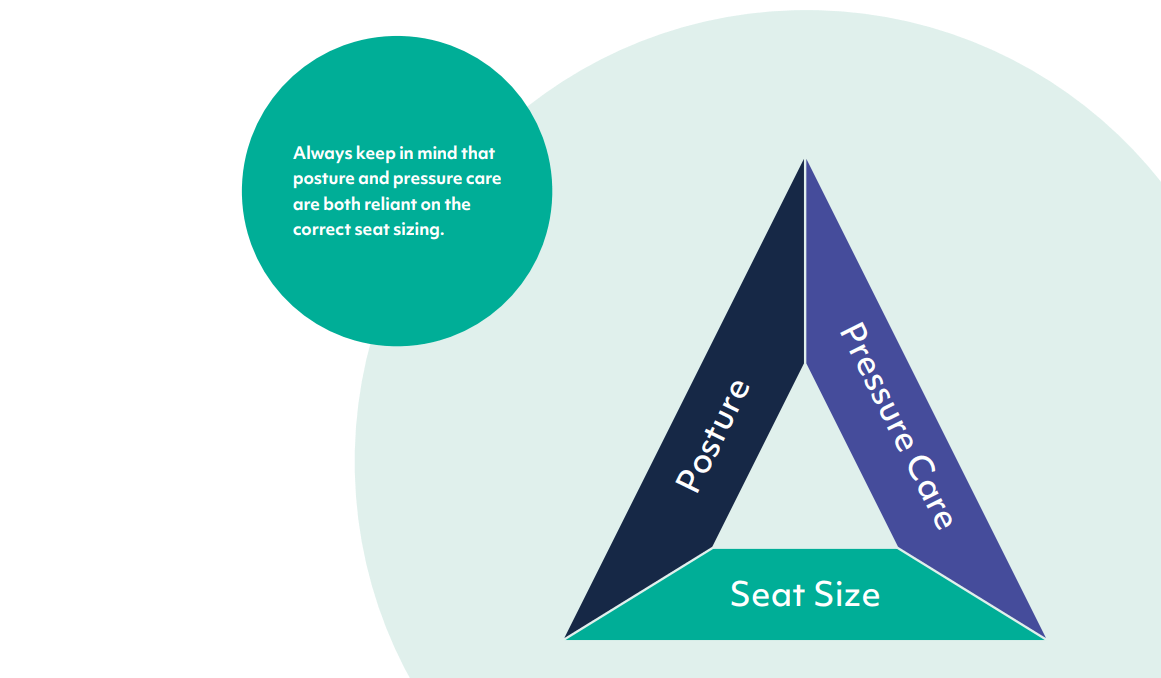
What Happens if Seat Measurements are Incorrect?
If the seat measurements are incorrect, the individual may experience discomfort, leading to a lack of use of the chair. This can cause pressure ulcers, back pain, and falls. A poorly fitting chair can also cause pressure on the bones, increasing the risk of fractures. It is essential to have the chair measured by a professional who can provide advice on the correct seat sizing for the individual’s needs.
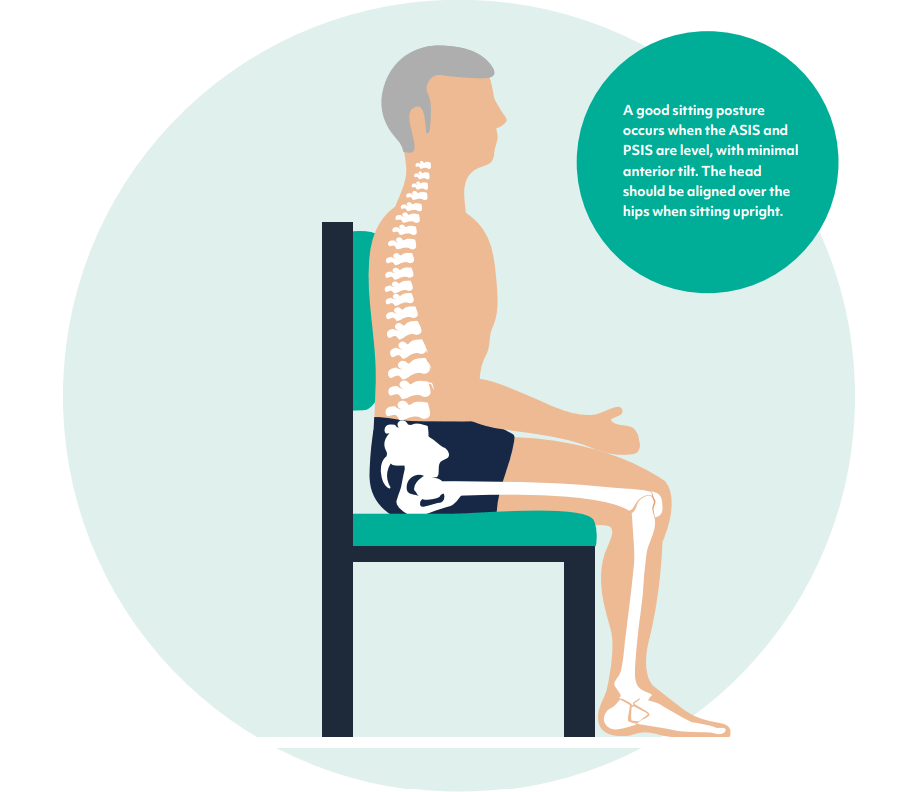
Riser Function
The lift/rise feature is another essential feature to consider when selecting specialist seating for those with osteoporosis. Standing up a chair from tends to increase the pressure (and body weight) that goes through the arms and up to the shoulders as a person pushes down on the armrests to propel themselves upwards. If the person carrying out this action also has osteoporosis, they actually run the risk of fracturing bones in their shoulder.
This chair lift feature can act as a standing aid, providing more stability and reducing pressure on bones used to get out of the chair. The lift/rise feature allows the individual to get in and out of the chair without putting pressure on their fragile bones.
The elevation of the chair will help to reduce the amount of pressure that goes through your shoulder joint, as you won’t have to bear down as hard to become upright.
This feature is particularly helpful for those with low mobility, as it reduces the risk of falls and fractures.
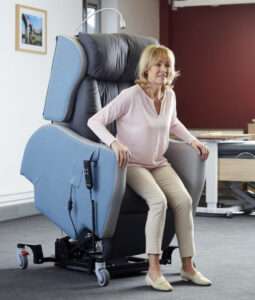
A chair rise feature lifts a seated person to an almost standing position, meaning you don’t have to put pressure on arms and shoulder when getting out of a chair.
Backrest Options
Proper support is also crucial in managing osteoporosis. The orthopaedic chair should have a supportive backrest and seat cushion to encourage proper posture and reduce pressure on the spine. The backrest should be adjustable and have a contour that supports the natural curvature of the spine. The seat cushion should also have a contour that supports the user’s hips and thighs and distributes pressure evenly.
With more advanced osteoporosis, you might find that your client has a noticeable curvature of the spine. This is because it’s fairly common for the vertebrae to break and it becomes more difficult for the spine to support the person’s body weight, therefore creating a stooped or hunched appearance.
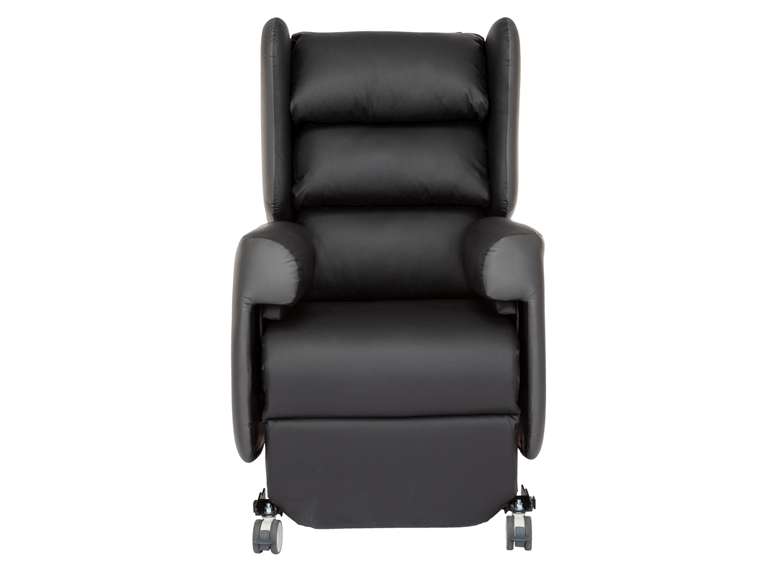
The 3-cushion waterfall backrest on the Lento Mobile supports the spine and allows for comfortable alignment.
Choosing the right backrest in a chair is vital to help with this. Adjustable waterfall backrests are usually our first choice when it comes to osteoporosis.
Consisting of 3 cushions, the backrest can be adjusted in shape and size to suit the individual’s spine. They offer a good level of lumbar support, and wadding can be added and removed from the top cushion to provide extra comfort and support for the curvature of the spine.
A rise and recline chair with a waterfall backrest is an ideal solution for this.
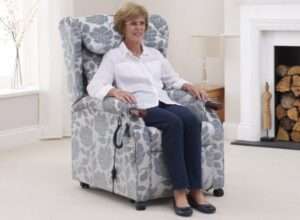
Rise & recline chairs are a good option for people with Osteoporosis because they help to alleviate unnecessary stress on bones and joints
Dual Tilt-In-Space
Tilt in space is a feature that can be particularly beneficial for individuals with osteoporosis. As previously mentioned, osteoporosis can cause a loss of height and a curvature of the spine. This can make sitting for long periods uncomfortable, especially if the individual is unable to adjust their position to relieve pressure on their back.
Tilt in space chairs allow the individual to change their position without putting pressure on their spine. The entire chair tilts backward as the seat base rises. This allows the user to maintain a comfortable position while keeping their feet on the ground. Tilt in space chairs can also improve circulation and reduce pressure on the lower back and legs.
In addition, tilt in space chairs can also help prevent falls and injuries. The chair’s tilt mechanism provides a stable base and helps maintain the individual’s center of gravity. This reduces the risk of falls, particularly when the user is attempting to stand up from a seated position.
This is also a great way to allow the client to tilt farther back and attain eye contact and conversation with the people around them.
In conjunction with the waterfall backrest, we also suggest looking for a chair that offers a dual tilt-in-space action. A riser recliner chair with dual tilt in space option gives the user an extra backrest angle to accommodate their posture.
Lumbar Support:
Lumbar support is a crucial feature for anyone looking for a chair to manage their osteoporosis symptoms. The lumbar region of the spine, located in the lower back, has a natural curve that should be supported to maintain proper posture and reduce the risk of lower back pain.
When sitting for extended periods, the lumbar curve can flatten out, leading to strain and discomfort. This can exacerbate osteoporosis symptoms and increase the risk of falls and fractures. Proper lumbar support can help to maintain the natural curve of the spine and reduce pressure on the lower back.
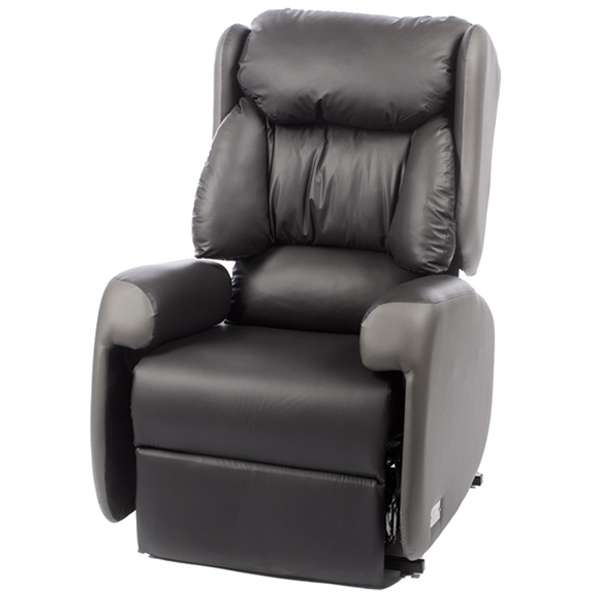
The Lento Mobile riser recliner chair comes with lumbar support cushions as standard to ensure the seated person is always supported.
There are several types of lumbar support available in chairs, including built-in lumbar pads, adjustable lumbar support, and removable lumbar cushions. Built-in lumbar pads are typically moulded into the backrest of the chair and offer consistent support. Adjustable lumbar support allows the user to adjust the level of support to their specific needs. Removable lumbar cushions can be added or removed from the chair to provide customisable support.
When selecting a chair with lumbar support, it is important to ensure that the support is located in the correct area for your lower back. The lumbar support should be placed at the level of the natural curve of the lower back, typically just above the waistline. The height and depth of the lumbar support should also be adjustable to fit the user’s specific needs.
Proper lumbar support not only reduces the risk of lower back pain but can also improve overall posture and spinal alignment, leading to a more comfortable and safe sitting experience.
Pressure Relief and Additional Supports
Of course, we would always recommend looking at additional pressure relief and positioning supports with a chair. Particularly for those with osteoporosis, you want to make sure that they are safely positioned in a chair, so they are not at any risk of damage whilst sat down.
Positioning supports can help the client to maintain a healthier overall position without increasing the chance of bone fractures.
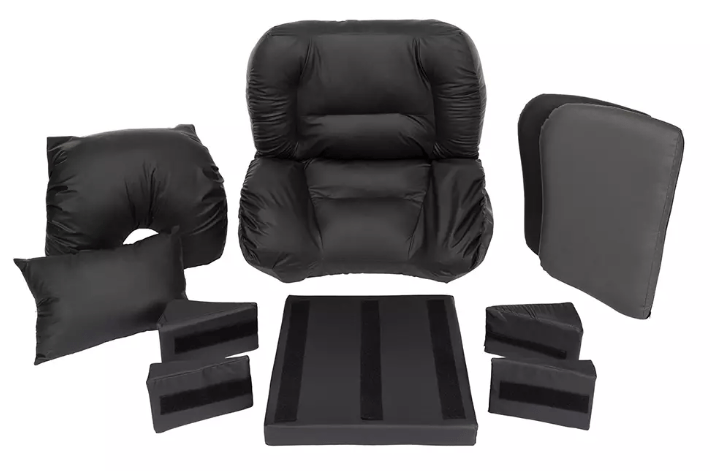
Our Lento accessories pack includes lateral support cushions to create a comfortable spinal alignment.
Our assessors often suggest extra lateral supports or curved cushions to use down the sides of the seat and the backrest, which will help to promote a better midline position of the spine. Foam cushions can also help to relieve pressure in the posterior or back, reducing the possibility of fractures in these areas.
Removing Trip Hazards
Falls are a massive problem for people with osteoporosis, and the NHS reports that they treat over half a million people a year who have suffered a bone fracture from standing height or less — this includes those with the condition.
Make sure that the area around the person (and their chair) is clear of trailing wires or objects that may cause them to trip and fall. Having an AccuPak battery system installed on the chair can help with this, as it means that there is no need to have wires going in and out of the chair to power it.
Assess how the individual will come to a standing position from the chair and ensure that the area is tidy and risk-free.
Summary:
Osteoporosis is a condition that affects millions of people worldwide, and choosing the right chair can make a significant difference in managing its symptoms. Vivid Care has been providing specialist seating for low mobility, elderly, disabled, and those with complex conditions for over 50 years. In this blog post, we’ve outlined the key features to look for in a chair that can help manage osteoporosis. These include stability, pressure reduction, encouragement of physical activity, and support for good posture. Additionally, we’ve discussed the importance of correct seat sizing and how our lift/rise feature can act as a standing aid, reducing pressure on bones when getting out of the chair.
How Vivid Care can help:
If you or a loved one are struggling with osteoporosis, the right chair can make a big difference. Vivid Care offers a wide range of specialist seating, including the Lento chair, which is designed to provide comfort, support, and pressure relief for those with complex conditions. Our trained assessors and occupational therapists can come to your place of residence, perform a seating assessment, and guide you through the purchase of your specialist seating from start to finish. Contact us today to learn more and schedule your assessment.
Arrange an assessment






